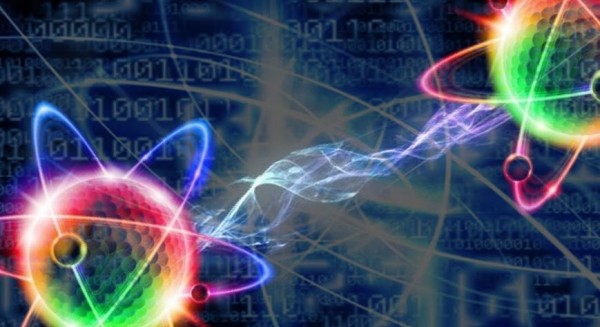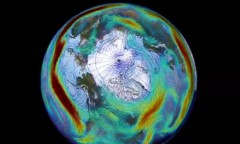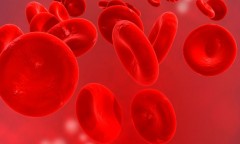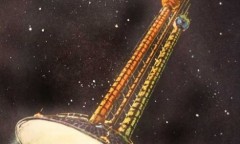By Arthur Dominic J. Villasanta , | March 29, 2017

Quantum entanglement.
There's a new mechanism involved in the creation of paired light particles that might have significant impact on the study of quantum physics.
Researchers at the University of East Anglia (UEA) in the United Kingdom have shown that when photons -- the fundamental particles of light -- are created in pairs, they can emerge from different, rather than the same, location.
Like Us on Facebook
The groundbreaking research could have significant implications for quantum physics, the theoretical basis of modern physics. Until now, the general assumption was that such photon pairs necessarily originate from single points in space.
Quantum entanglement, which occurs when particles are linked so closely that what affects one directly affects the other, is widely used in labs in numerous processes from quantum cryptography to quantum teleportation.
The UEA team was studying a process called spontaneous parametric down-conversion (SPDC), in which photon beams are passed through a crystal to generate entangled pairs of photons.
The entanglement of the quantum states in each pair has important applications in quantum computing -- theoretical computation systems that could potentially process big data problems at incredible speeds -- as well as other areas of quantum physics.
"When the emergent pairs equally share the energy of the input, this is known as degenerate down-conversion, or DDC," said Prof. David Andrews in UEA's School of Chemistry.
"Until now, it has been assumed that such paired photons come from the same location. Now, the identification of a new delocalized mechanism shows that each photon pair can be emitted from spatially separated points, introducing a new positional uncertainty of a fundamental quantum origin."
The findings are also significant because they place limits on spatial resolution, said Prof Andrews.
"Everything has a certain quantum 'fuzziness' to it, and photons are not the hard little bullets of light that are popularly imagined."
The study 'Nonlocalized generation of correlated photon pairs in degenerate down-conversion' by Kayn A. Forbes, Jack S. Ford, and David L. Andrews is published in the journal Physical Review Letters.
-
Use of Coronavirus Pandemic Drones Raises Privacy Concerns: Drones Spread Fear, Local Officials Say

-
Coronavirus Hampers The Delivery Of Lockheed Martin F-35 Stealth Fighters For 2020

-
Instagram Speeds Up Plans to Add Account Memorialization Feature Due to COVID-19 Deaths

-
NASA: Perseverance Plans to Bring 'Mars Rock' to Earth in 2031

-
600 Dead And 3,000 In The Hospital as Iranians Believed Drinking High-Concentrations of Alcohol Can Cure The Coronavirus

-
600 Dead And 3,000 In The Hospital as Iranians Believed Drinking High-Concentrations of Alcohol Can Cure The Coronavirus

-
COVID-19: Doctors, Nurses Use Virtual Reality to Learn New Skills in Treating Coronavirus Patients











